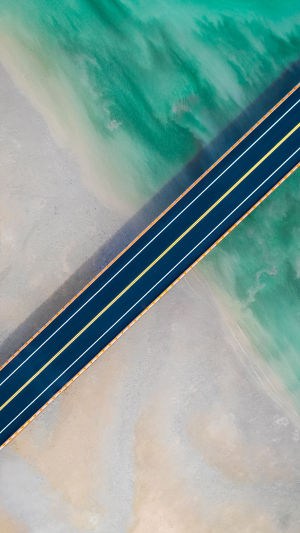With the continuous advancement of engineering technology, the expectations and demands placed on engineering projects have increased exponentially.
Once considered landmarks, skyscrapers that stood at a mere 100 meters are now commonplace residential structures.
Bridges that were once renowned for spanning rivers are now designed to withstand the challenges of crossing the Yangtze River, the Yellow River, mountains, valleys, and even seas, braving high winds, waves, earthquakes, typhoons, and the corrosive effects of seawater.
The Challenge of Marine Engineering Construction: Cross-sea bridges face a unique set of challenges, including the relentless forces of sea winds and the corrosive nature of seawater. In humid air, the steel surface develops a water film that dissolves gases like carbon dioxide, sulfur dioxide, and hydrogen sulfide from the atmosphere.
This water film contains hydrogen ions, forming an electrolyte solution that, in combination with iron and a small amount of carbon in the steel, initiates a corrosion process.
Traditional anti-corrosion methods such as painting steel beams struggle to meet the corrosion resistance standards required for high-speed rail engineering structures, particularly in coastal areas with high salt content and humidity.
The Role of Marine Atmospheric Corrosion-Resistant Steel: To combat these challenges, researchers have developed marine atmospheric corrosion-resistant steel, which represents the forefront of super steel technology.
By incorporating trace amounts of nickel into the steel, a dense and stable rust layer forms, effectively passivating the steel and preventing the penetration of chloride ions from seawater. This innovative approach achieves a long-lasting anti-corrosion effect, known as "rust against rust," and ensures the durability of structures in marine environments.
Addressing Wind-Related Concerns: Due to their location in coastal high wind speed zones, cross-sea bridges must account for strong sea winds and sea breezes that exert considerable impact.
To mitigate potential issues such as lateral sway and vortex vibration caused by wind, structural innovation is required to ensure pavement stiffness. By employing engineering techniques that enhance stability, these bridges can effectively withstand the forceful winds and maintain their integrity.
The Importance of Bridge Piers: The safety of cross-sea bridges heavily relies on the design and construction of their supporting piers. Piers is not exclusive to bridges but are vital components of any building, providing a solid foundation that extends deep into the soil.
Without a strong connection between the superstructure and the foundation, even the most robust upper structure can result in a catastrophic collapse.
Overcoming Construction Challenges: Engineers possess significant expertise in constructing land-based foundations. When faced with offshore projects, they often explore the possibility of adapting land-based construction methods. In areas with shallow seawater, engineers typically employ cofferdams around the construction site.
Cofferdams are created by enclosing the bridge pier area with water-stopping structures like sheet piles and earth and rock dams. This isolation prevents water from entering the construction zone. Subsequently, the cofferdams are dewatered using pumping machines, transforming them into soil-like structures resembling solid land.
The Öresund Bridge: An Engineering Marvel: One prominent example of a cross-sea bridge is the Öresund Bridge, connecting Denmark's capital, Copenhagen, with the Swedish city of Malmö.
This architectural marvel combines a cable-stayed bridge, an underwater tunnel, and an artificial island, spanning approximately 8 kilometers (5 miles) across the Öresund Strait. Following a grand ceremony, the bridge was officially opened to traffic on July 1, 2000, celebrating the seamless connection between Denmark and Sweden.
As engineering technology continues to advance, the challenges faced by engineers grow alongside the increasing demands of society.





